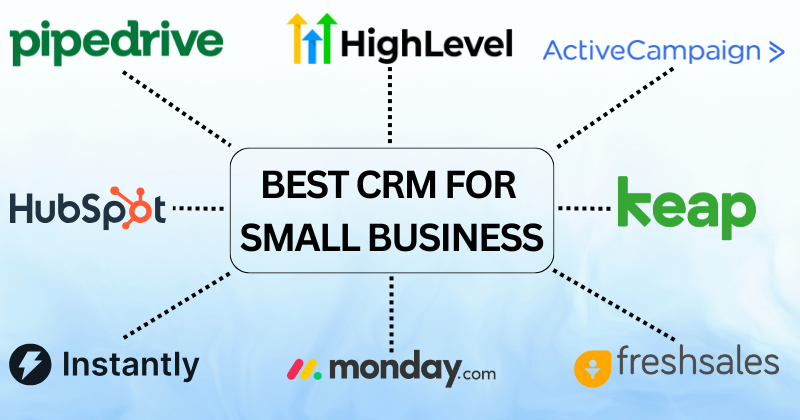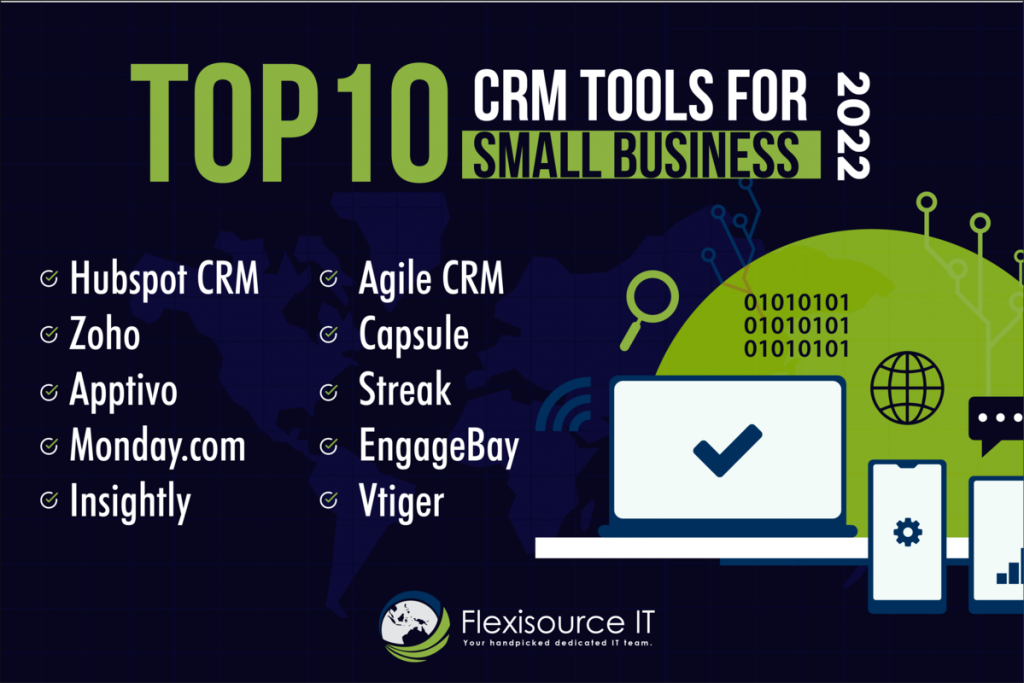
CRM Marketing Segmentation: The Ultimate Guide to Personalized Customer Experiences
In the ever-evolving landscape of digital marketing, understanding your customers is paramount. Gone are the days of generic messaging and one-size-fits-all campaigns. Today, the key to success lies in personalization, delivering the right message, to the right person, at the right time. This is where CRM marketing segmentation comes into play. It’s the art and science of dividing your customer base into distinct groups, or segments, based on shared characteristics. This allows you to tailor your marketing efforts, create targeted campaigns, and ultimately, build stronger, more meaningful relationships with your customers.
This comprehensive guide will delve deep into the world of CRM marketing segmentation. We’ll explore the benefits, the different segmentation strategies, the tools you can use, and how to implement them effectively. Whether you’re a seasoned marketer or just starting out, this guide will equip you with the knowledge and skills you need to master customer segmentation and elevate your marketing game.
What is CRM Marketing Segmentation?
At its core, CRM marketing segmentation is the process of dividing your customer base into smaller, more manageable groups based on specific criteria. These criteria can range from demographics and behaviors to psychographics and needs. By understanding the unique characteristics of each segment, you can create highly targeted marketing campaigns that resonate with each group’s specific interests and needs. This leads to increased engagement, higher conversion rates, and improved customer loyalty.
Think of it like this: you wouldn’t serve the same meal to everyone at a restaurant. Some people are vegetarian, some have allergies, and some simply prefer certain flavors. Segmentation allows you to cater to these individual preferences and provide a more satisfying experience. In marketing, this translates to providing relevant content, personalized offers, and a more positive overall customer journey.
Why is CRM Marketing Segmentation Important?
The benefits of CRM marketing segmentation are numerous and far-reaching. Here are some of the key advantages:
- Improved Targeting: Segmentation allows you to target specific customer groups with tailored messages and offers, ensuring that your marketing efforts are more relevant and effective.
- Increased Engagement: When customers receive content and offers that are relevant to their interests, they are more likely to engage with your brand.
- Higher Conversion Rates: Targeted campaigns are more likely to convert leads into customers and customers into repeat buyers.
- Enhanced Customer Loyalty: Personalized experiences foster stronger relationships with customers, leading to increased loyalty and advocacy.
- Reduced Marketing Costs: By focusing your efforts on the most promising segments, you can reduce wasted marketing spend and improve your ROI.
- Better Customer Understanding: Segmentation provides valuable insights into your customer base, helping you to better understand their needs, preferences, and behaviors.
- Competitive Advantage: In a crowded marketplace, segmentation allows you to differentiate your brand and provide a more personalized customer experience.
Types of CRM Marketing Segmentation
There are several different ways to segment your customer base, each with its own strengths and weaknesses. Here are some of the most common segmentation strategies:
1. Demographic Segmentation
Demographic segmentation involves dividing your customer base based on demographic factors such as age, gender, income, education, occupation, and family size. This is one of the most basic and widely used segmentation strategies. It’s relatively easy to collect demographic data, and it can provide valuable insights into your customers’ needs and preferences.
Example: A clothing retailer might segment its customers by age, creating separate marketing campaigns for teenagers, young adults, and older adults.
2. Geographic Segmentation
Geographic segmentation involves dividing your customer base based on geographic factors such as location, climate, and population density. This is particularly useful for businesses that operate in specific geographic areas or that have different product offerings based on location.
Example: A restaurant chain might use geographic segmentation to target customers in different cities with specific menu items or promotions.
3. Psychographic Segmentation
Psychographic segmentation involves dividing your customer base based on psychographic factors such as lifestyle, values, personality, interests, and attitudes. This type of segmentation goes beyond demographics to understand what motivates your customers and what they care about. It can be more challenging to collect psychographic data, but it can also be very rewarding, providing a deeper understanding of your customers’ needs and preferences.
Example: A travel agency might segment its customers based on their lifestyle, creating separate marketing campaigns for adventure travelers, luxury travelers, and budget travelers.
4. Behavioral Segmentation
Behavioral segmentation involves dividing your customer base based on their behaviors, such as purchase history, website activity, product usage, and brand interactions. This is one of the most powerful segmentation strategies, as it focuses on what customers actually do, rather than what they say they do. It allows you to create highly targeted campaigns based on real-time data.
Example: An e-commerce store might segment its customers based on their purchase history, sending targeted emails with product recommendations based on their past purchases.
5. Needs-Based Segmentation
Needs-based segmentation involves dividing your customer base based on their specific needs and wants. This type of segmentation requires a deep understanding of your customers’ pain points and motivations. It can be particularly effective for businesses that offer a wide range of products or services.
Example: A software company might segment its customers based on their needs, creating separate marketing campaigns for small businesses, enterprise clients, and individual users.
How to Implement CRM Marketing Segmentation
Implementing CRM marketing segmentation requires a strategic approach. Here’s a step-by-step guide to help you get started:
1. Define Your Objectives
Before you begin segmenting your customer base, you need to define your objectives. What do you hope to achieve with segmentation? Are you looking to increase sales, improve customer loyalty, or reduce marketing costs? Having clear objectives will guide your segmentation strategy and help you measure your results.
2. Gather Data
The next step is to gather data about your customers. This data can come from a variety of sources, including your CRM system, website analytics, social media platforms, and customer surveys. The more data you have, the more accurate and effective your segmentation will be.
3. Choose Your Segmentation Criteria
Based on your objectives and the data you have available, choose the segmentation criteria that are most relevant to your business. Consider using a combination of different segmentation strategies to create more granular and effective segments.
4. Analyze Your Data
Once you’ve gathered your data and chosen your segmentation criteria, analyze your data to identify patterns and trends. Look for common characteristics among your customers and identify distinct groups that can be segmented.
5. Create Your Segments
Based on your analysis, create your customer segments. Give each segment a descriptive name and define the key characteristics of each segment. This will help you to understand and target each segment more effectively.
6. Develop Targeted Marketing Campaigns
Once you’ve created your segments, develop targeted marketing campaigns for each segment. Tailor your messaging, offers, and content to the specific needs and preferences of each group. Use different channels to reach each segment, such as email, social media, and paid advertising.
7. Measure and Optimize
It’s important to measure the results of your segmentation efforts and make adjustments as needed. Track key metrics such as conversion rates, customer engagement, and customer loyalty. Use this data to optimize your segmentation strategy and improve your results over time.
Tools for CRM Marketing Segmentation
There are a variety of tools available to help you with CRM marketing segmentation. Here are some of the most popular:
- CRM Systems: CRM systems such as Salesforce, HubSpot, and Zoho CRM provide a central database for storing customer data and allow you to segment your customer base based on various criteria.
- Marketing Automation Platforms: Marketing automation platforms such as Marketo, Pardot, and ActiveCampaign allow you to automate your marketing campaigns and personalize your messaging based on customer segments.
- Data Analytics Tools: Data analytics tools such as Google Analytics and Adobe Analytics can provide valuable insights into your customer behavior and help you to identify patterns and trends.
- Customer Survey Tools: Customer survey tools such as SurveyMonkey and Qualtrics allow you to gather data about your customers’ needs, preferences, and behaviors.
Best Practices for CRM Marketing Segmentation
To maximize the effectiveness of your CRM marketing segmentation efforts, follow these best practices:
- Start Small: Don’t try to segment your entire customer base at once. Start with a few key segments and gradually expand your efforts.
- Focus on Actionable Segments: Create segments that are based on data that you can use to take action. Avoid creating segments that are too broad or too narrow.
- Keep it Simple: Don’t overcomplicate your segmentation strategy. Start with a few key criteria and add more as needed.
- Personalize Your Messaging: Tailor your messaging, offers, and content to the specific needs and preferences of each segment.
- Test and Iterate: Test different segmentation strategies and make adjustments as needed. Continuously monitor your results and optimize your efforts.
- Respect Privacy: Always respect your customers’ privacy and comply with all relevant data privacy regulations.
- Use a CRM: A good CRM is essential for managing customer data and implementing segmentation strategies.
- Analyze and Refine: Regularly analyze the performance of your segments and refine your criteria based on the results.
Examples of CRM Marketing Segmentation in Action
Let’s look at some real-world examples of how businesses are using CRM marketing segmentation:
Example 1: E-commerce Store
An e-commerce store segments its customers based on their purchase history. They identify three key segments:
- New Customers: Customers who have made their first purchase.
- Repeat Customers: Customers who have made multiple purchases.
- High-Value Customers: Customers who have spent a significant amount of money.
They then create targeted email campaigns for each segment:
- New Customers: Welcome email with a discount code and product recommendations.
- Repeat Customers: Loyalty program offers and exclusive deals.
- High-Value Customers: Early access to new products, personalized service, and exclusive events.
Example 2: SaaS Company
A SaaS company segments its customers based on their usage of the product. They identify three key segments:
- Free Trial Users: Users who are currently using the free trial.
- Active Users: Users who are actively using the product.
- Churned Users: Users who have canceled their subscription.
They then create targeted email campaigns for each segment:
- Free Trial Users: Onboarding emails with tips and tutorials, and a reminder to upgrade to a paid plan.
- Active Users: Product updates, feature announcements, and tips on how to get the most out of the product.
- Churned Users: Win-back emails with special offers and incentives to reactivate their account.
Example 3: Financial Institution
A financial institution segments its customers based on their financial needs. They identify three key segments:
- First-Time Homebuyers: Customers who are looking to purchase their first home.
- Investors: Customers who are interested in investment products.
- Retirees: Customers who are nearing retirement.
They then create targeted marketing campaigns for each segment:
- First-Time Homebuyers: Educational content on the home-buying process, mortgage options, and financial planning.
- Investors: Information on investment products, market updates, and financial advice.
- Retirees: Retirement planning guides, investment options for retirement, and estate planning resources.
Common Mistakes to Avoid in CRM Marketing Segmentation
While CRM marketing segmentation can be incredibly effective, there are also some common mistakes that businesses make. Here are some things to avoid:
- Over-segmentation: Creating too many segments can make it difficult to manage your campaigns and can lead to diluted results.
- Under-segmentation: Not segmenting your customer base enough can result in generic messaging and reduced engagement.
- Lack of Data: Not having enough data to support your segmentation strategy can lead to inaccurate segments and ineffective campaigns.
- Ignoring Customer Feedback: Failing to listen to customer feedback can lead to segmentation strategies that are not aligned with your customers’ needs and preferences.
- Not Updating Segments Regularly: Customer preferences and behaviors change over time, so it’s important to update your segments regularly to ensure they remain relevant.
- Focusing on the Wrong Metrics: Tracking the wrong metrics can lead to inaccurate results and a misinterpretation of your segmentation efforts.
- Not Integrating with Other Systems: Failing to integrate your segmentation efforts with your CRM and other marketing systems can limit your ability to personalize your campaigns and track your results.
The Future of CRM Marketing Segmentation
The future of CRM marketing segmentation is bright, with new technologies and trends emerging that will further enhance its effectiveness. Here are some things to watch out for:
- Artificial Intelligence (AI): AI is being used to automate the segmentation process, identify patterns in customer data, and personalize marketing campaigns in real-time.
- Machine Learning (ML): ML algorithms are being used to predict customer behavior, identify new segments, and optimize marketing campaigns.
- Hyper-Personalization: Marketers are moving towards hyper-personalization, tailoring their messaging to individual customers based on their real-time behavior and preferences.
- Data Privacy: With increasing concerns about data privacy, marketers are focusing on ethical data practices and building trust with their customers.
- Omnichannel Marketing: Marketers are using omnichannel marketing to deliver consistent and personalized experiences across all channels, including email, social media, and mobile.
Conclusion
CRM marketing segmentation is a powerful tool that can help you to build stronger relationships with your customers, increase engagement, and drive sales. By understanding your customers’ needs and preferences, you can create targeted campaigns that resonate with each group. By following the steps outlined in this guide, you can implement an effective segmentation strategy and take your marketing efforts to the next level.
Remember, the key to success is to start small, focus on actionable segments, and continuously test and optimize your efforts. With a well-defined segmentation strategy, you can create a more personalized customer experience and build a loyal customer base that drives long-term growth.
So, take the time to understand your customers, segment your audience, and start delivering the right message, to the right person, at the right time. Your customers will thank you for it.


